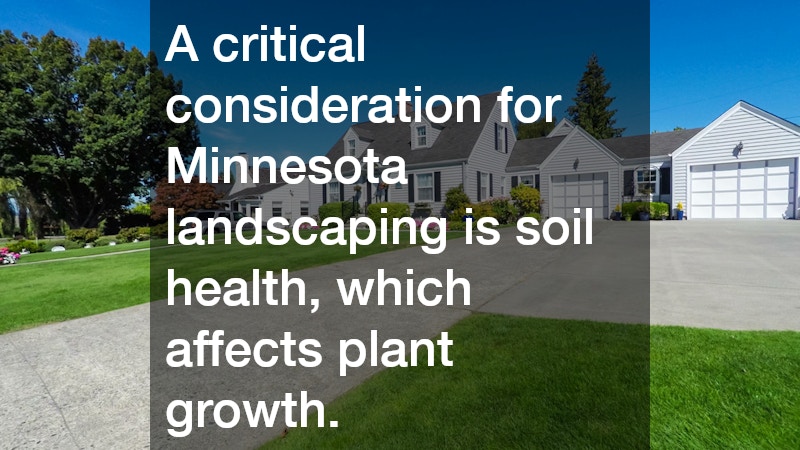The Complete Guide to Landscaping in Minnesota’s Unique Climate
Landscaping in Minnesota poses a unique set of challenges that require thoughtful planning and execution. The state’s climate is characterized by harsh winters, heavy snowfall, and a short growing season, making it vital for homeowners and landscapers to select the right plants and materials. As the seasons change, so do the needs of your landscape, requiring flexible approaches to garden maintenance. In this complete guide, we delve into the nuances of creating a thriving garden that not only survives but thrives in Minnesota’s distinctive climate.
Whether you’re a seasoned gardener or just starting out, these insights will help you transform your outdoor space into a year-round oasis.
To successfully landscape in Minnesota, one must consider the state’s USDA Hardiness Zones, which range from 3a in the north to 5a in the southeast. These zones dictate which plants can survive the area’s extreme weather conditions. Native plants are an excellent choice, as they have naturally adapted to the local climate and soil conditions. They require less water, less fertilizer, and are more resistant to local pests and diseases. Incorporating native species like purple coneflower, prairie smoke, and wild geranium can create a low-maintenance, sustainable garden palette that withstands Minnesota’s climate challenges.
A critical consideration for Minnesota landscaping is soil health, which affects plant growth. The soil in Minnesota ranges from clay in the south to sandy loam in parts of the north. Conducting a soil test is an essential first step in garden planning, as it will provide insights into the pH levels and nutrient content of your soil. Based on the test results, amendments such as organic compost, peat moss, or sand may be necessary to optimize soil conditions. This will ensure robust root systems and healthy plant growth, even when weather patterns are unpredictable.
Designing for all four seasons is another key element of successful Minnesota landscaping. Winters can be especially harsh, but they offer an opportunity to use structural plants like evergreens, which provide year-round interest and act as windbreakers. In the spring and summer, incorporating a diverse mix of flowering perennials ensures a dynamic and colorful display. Incorporating trees such as Maple, with its vivid fall colors, extends the beauty of your landscape well into autumn. By considering seasonal variations, you can maintain a visually appealing and functional outdoor space throughout the year.
Water management is crucial in Minnesota, where climate conditions can swing from drought to excessive rainfall. Implementing efficient irrigation systems, such as drip irrigation or soaker hoses, can conserve water and deliver moisture directly to plant roots. Additionally, using rain gardens or swales can help manage stormwater runoff and prevent soil erosion. Choosing drought-resistant plants can further reduce watering needs during dry spells. Developing a sustainable irrigation strategy not only supports plant health but also contributes to environmental conservation.
Winterizing your garden is an essential step in Minnesota landscaping, as it ensures that plants survive the cold months. Mulching is a highly effective technique that insulates plant roots and conserves moisture. Applying a thick layer of mulch in late fall protects perennials and shrubs from temperature fluctuations. In addition, selecting plants with deep root systems can enhance their ability to store nutrients and survive the winter. It’s also important to consider the hardiness of various plant species when planning your garden, to ensure resilience against Minnesota’s frosty winters and dynamic seasonal shifts.
Achieving a lush and inviting landscape in Minnesota is entirely possible with the right approach. Understanding the climate’s impact on plant selection, soil health, seasonal design, water management, and winterization can turn your gardening challenges into rewarding achievements. By carefully curating a selection of native and hardy plants, optimizing soil conditions, and employing sustainable practices, you can create an outdoor space that thrives year after year. Remember, Minnesota’s climate offers a unique opportunity to blend beautiful gardens with functional design. Embrace the state’s natural characteristics to cultivate a resilient and stunning landscape that enhances both your home and the environment.

